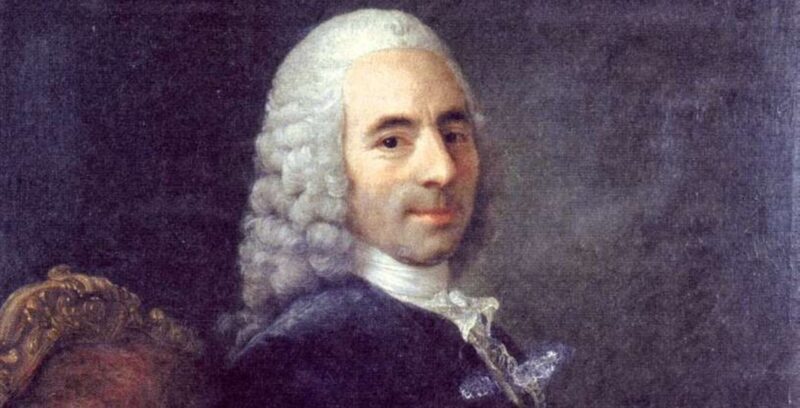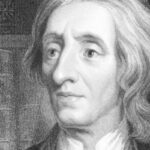We explain what physiocracy is and what its history is. Also, what is physiocratic theory and the various criticisms of this school of thought.

What is physiocracy?
Physiocracy is a school of economic thought developed in France during the 18th century by the thinker, surgeon and economist François Quesnay (1694-1774). It is an economic theory based on the laissez fairewhich in French means “let it be done,” and refers to the natural order.
As a school of economic thought, physiocracy defends the search for economic wealth based on the exploitation of the primary sector, that is, agriculture. This is because physiocrats assume that this is the only sector that allows producing an economic surplus, since the cost of production is lower than the profit obtained.
Physiocratic theory is made up of three main areas:
- The philosophical or natural order area.
- The political area or government maxims.
- The economic area that links to the other areas.
The physiocratic school was born during the 18th century in an attempt to introduce, in the French Old Regime, a series of social forms that promoted economic growth based on agriculture.
Etymology of the term “physiocracy”
The word physiocracy comes from French physiocratie. It is a neologism that synthesizes the perspective of the physiocratic school developed by Quesnay. Etymologically, the term means “government of nature.”
the word physiocracy this formed from Greek roots physiswhich is the action of growing, and kratoswhich means power. In this way, the emergence of “physiocracy” must be understood as the search for a term that alludes to the power of nature to govern.
History of the physiocratic school
Physiocracy, as an economic doctrine, It developed during the first decades of the second half of the 18th century in reaction to the mercantilist doctrine. This was a time of many economic and political debates, as well as being a period of intense intellectual activity in France.
The physiocratic school is considered the first economic school in history in the strict sense.. It had a teacher, a shared doctrine and means of propaganda. The person who developed the economic theory of physiocracy was François Quesnay, between 1757 and 1768. Quesnay considered agriculture as the only economic activity that could provide a net product as a surplus from work once the needs of production and consumption were satisfied.
Quesnay founded the school together with the Marquis of Mirabeau, Victor Riquetti, in July 1757. They were joined by Le Mercier de La Riviére, G. François Le Trosne, Abbot Nicolas Baudeau and Pierre Samuel Dupont de Nemours. The group remained active for several years. The period of greatest activity, in which he published a large number of writings through his own media, was between 1760 and 1775.
physiocratic theory
Physiocracy can be organized around three large areas: the philosophical-political area, the economic-analytical area and the area of government maxims.
The philosophical-political area is organized around the concepts of natural order, evidence and legal despotism. Evidence has to do with the idea of a self-evident truth, which for physiocrats consists of the existence of a natural order that governs society and that must be adopted for its proper functioning. Through the evidenceevery person can recognize and submit to this natural order.
The problem is that the political consequence of the evidence and the natural order is legal despotism, which is a form of absolute government, without any counterpower, which must enforce the particular interests of the natural order.
The economic-analytical area It is organized based on two major contributions: the theory of productivity exclusive to agriculture and Economic Tableau (economic table) of Quesnay. The production of the net product and the origin of wealth depend on them, as well as the distinction between occupations that are productive and those that are sterile, the division into three social classes (proprietary, productive and sterile) and the flow of payments and income developed in the Economic Tableau.
For its part, the main maxims of the government economic come together to lead society towards the natural order, according to Quesnay. The main idea is to strengthen the French monarchy exclusively through the promotion of agriculture as the only source of wealth. The government program consists of four measures:
- Promote landowners' spending on agricultural goods by reducing luxury purchases.
- Establish free trade in grain and generate good price (good price).
- Base agrarian development on the extension of great culture over small culture.
- Carry out a tax reform that introduces a single tax on land income.
Criticisms of physiocracy
Physiocracy was not very well received in France. Outside of the physiocratic school and some circles of followers, the majority of intellectuals and actors who participated in the French economic circuit had something to object to physiocracy.
Many sectors were affected by the doctrine, especially guilds, local authorities, commercial organizations, tax collectors and landowners. Besides, the intellectual community criticized the economic foundations of the doctrinethrough publications made by French economists and philosophers.
The first criticisms were made by Jean-Joseph Graslin and Véron de Forbonnaisboth from the group of Vicent de Gournay. Voltaire also published a publication against physiocratic ideas. However, the one who had the greatest reach with his criticism was Ferdinando Galiana, who in 1770 published a text in which he directly attacked the physiocratic theory.
References
- QUESNAY, François (1767-1768, 1768-1769): Physiocratie, ou Constitution naturelle du gou-vernement le plus avantageux au genre humain; compilation published by DuPont de Nemours2vol., Leyde and Paris, Merlin.
- Juanes, J. (1976). The Physiocrats: The birth of political economy. YoEconomic research35(138), 405-413.
- Llombart, V. (2009). The value of Physiocracy in its own time: a critical analysis. Economic history research5(15), 109-136.





